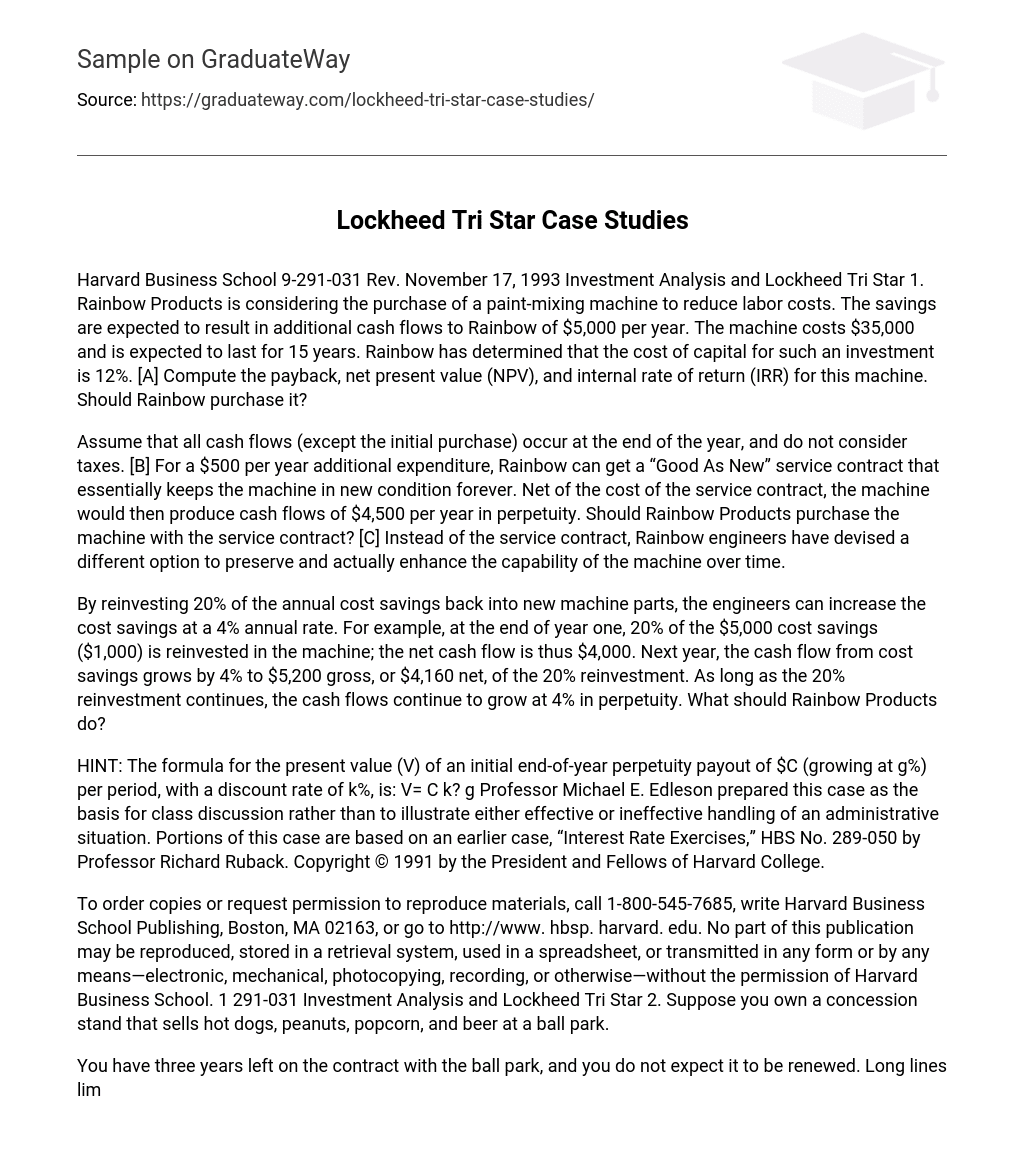Rainbow Products is considering the purchase of a paint-mixing machine to reduce labor costs. The savings are expected to result in additional cash flows to Rainbow of $5,000 per year. The machine costs $35,000 and is expected to last for 15 years. Rainbow has determined that the cost of capital for such an investment is 12%. [A] Compute the payback, net present value (NPV), and internal rate of return (IRR) for this machine. Should Rainbow purchase it?
Assume that all cash flows (except the initial purchase) occur at the end of the year, and do not consider taxes. [B] For a $500 per year additional expenditure, Rainbow can get a “Good As New” service contract that essentially keeps the machine in new condition forever. Net of the cost of the service contract, the machine would then produce cash flows of $4,500 per year in perpetuity. Should Rainbow Products purchase the machine with the service contract?
Instead of the service contract, Rainbow engineers have devised a different option to preserve and actually enhance the capability of the machine over time. By reinvesting 20% of the annual cost savings back into new machine parts, the engineers can increase the cost savings at a 4% annual rate. For example, at the end of year one, 20% of the $5,000 cost savings ($1,000) is reinvested in the machine; the net cash flow is thus $4,000. Next year, the cash flow from cost savings grows by 4% to $5,200 gross, or $4,160 net, of the 20% reinvestment. As long as the 20% reinvestment continues, the cash flows continue to grow at 4% in perpetuity. What should Rainbow Products do?
HINT: The formula for the present value (V) of an initial end-of-year perpetuity payout of $C (growing at g%) per period, with a discount rate of k%, is: V= C k? g Professor Michael E. Edleson prepared this case as the basis for class discussion rather than to illustrate either effective or ineffective handling of an administrative situation. Portions of this case are based on an earlier case, “Interest Rate Exercises,” HBS No. 289-050 by Professor Richard Ruback.





